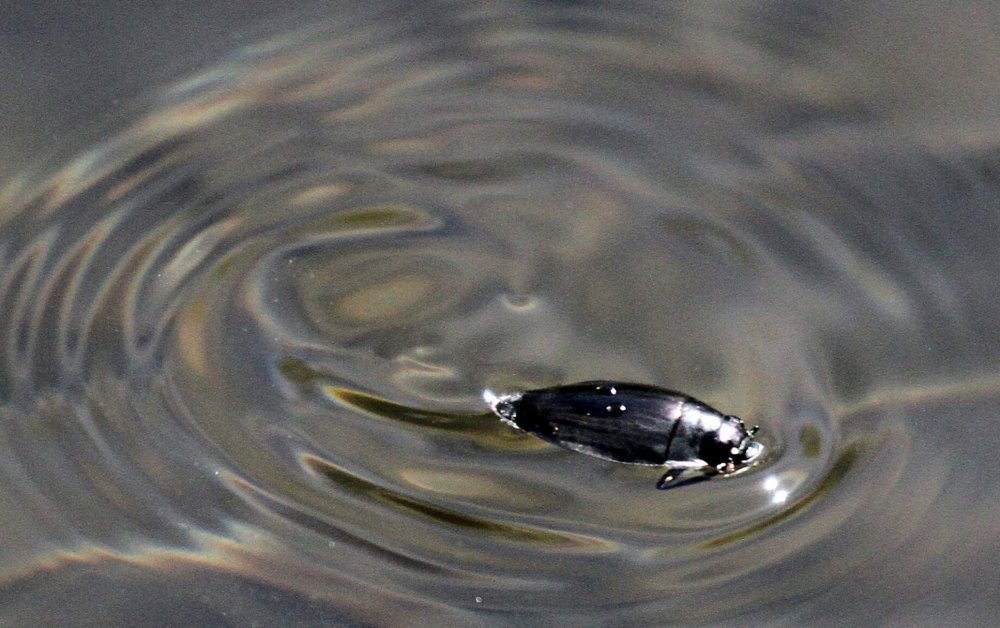Gulls, Terns, etc
These birds are all associated with marine environments, but the truth is, they don’t care. You’ll find them wherever there is food. Since no place in New Jersey is really very far from the ocean, you can find most of these almost anywhere.
Herring Gull
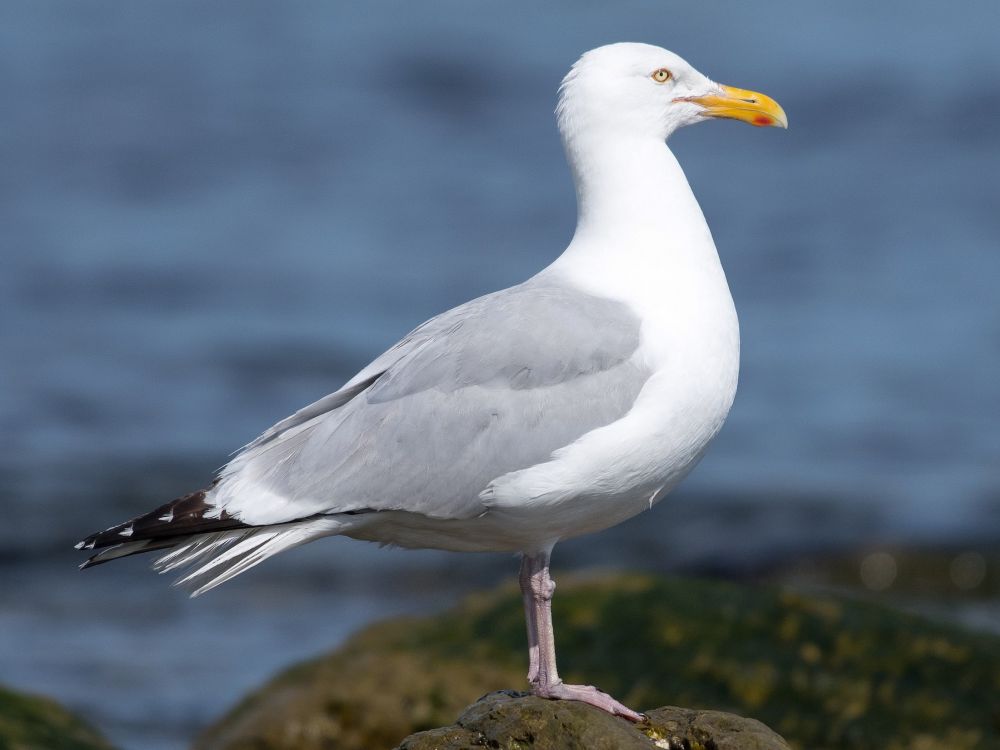
While commonly thought of as sea birds, Herring Gulls may be found wherever they feel like going. That means saltwater, freshwater, no water – if there is something to eat, you will probably find these birds there. They do not migrate.
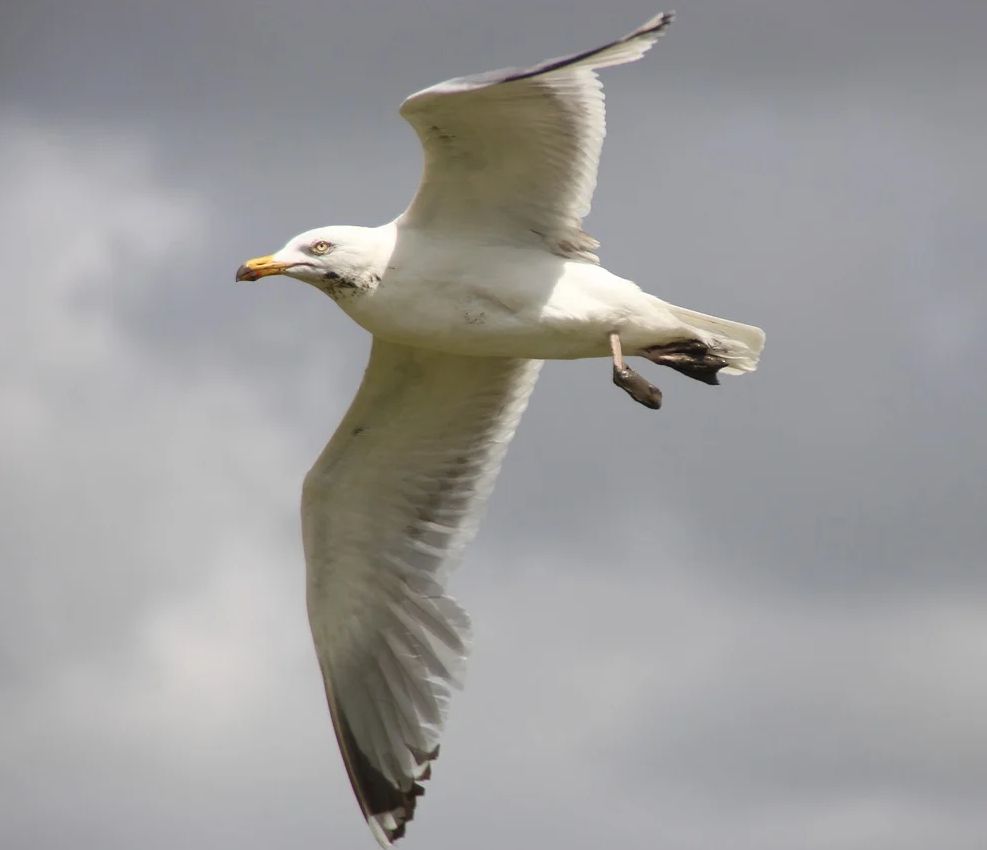
Note the all-white head, and white belly and under-wings with dark tips. Young birds are dirty brown, adults have a brown-speckled head and breast in winter.
Laughing Gull

The Laughing Gull is smaller than the Herring Gull, and tends to get bullied by them when competing for food. The Laughing Gull is less likely to be seen away from salt water, although they are found in the Great Lakes.

Outside of mating season, the head fades to white and the bill turns black. You never see them around here like that, because they migrate away for the winter.
Common Tern

The Common Tern is smaller and slimmer than the Laughing Gull, with a black cap rather than a black head. This bird is found the world over, and far inland in many places. They migrate south for the winter.
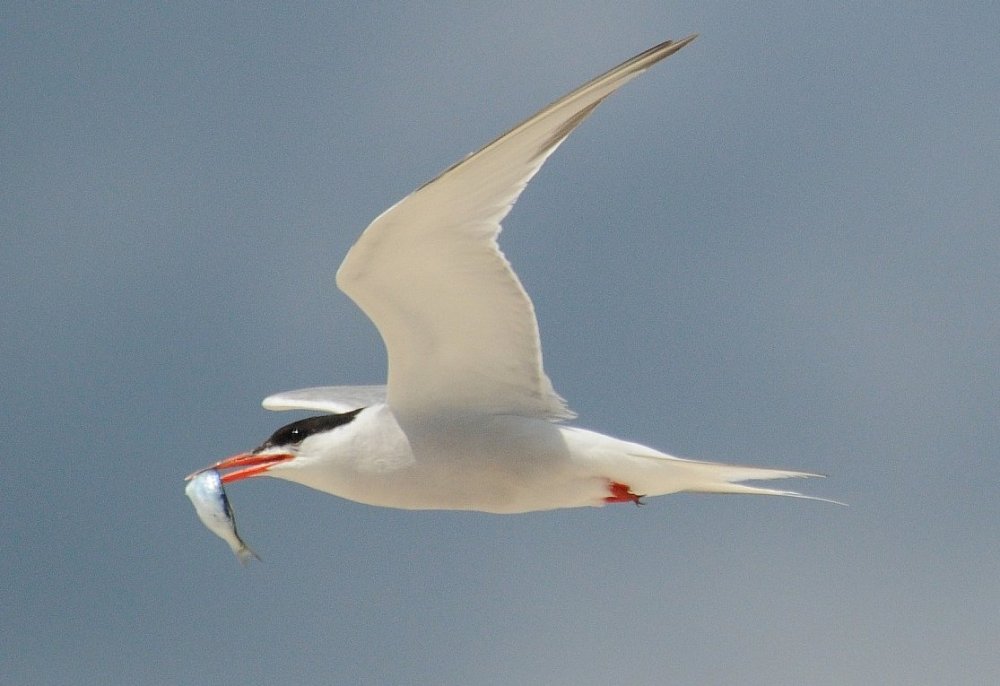
Black Skimmer

This is a very cool bird to see. It is like a large dark sea gull, but the picture below really tells it all:
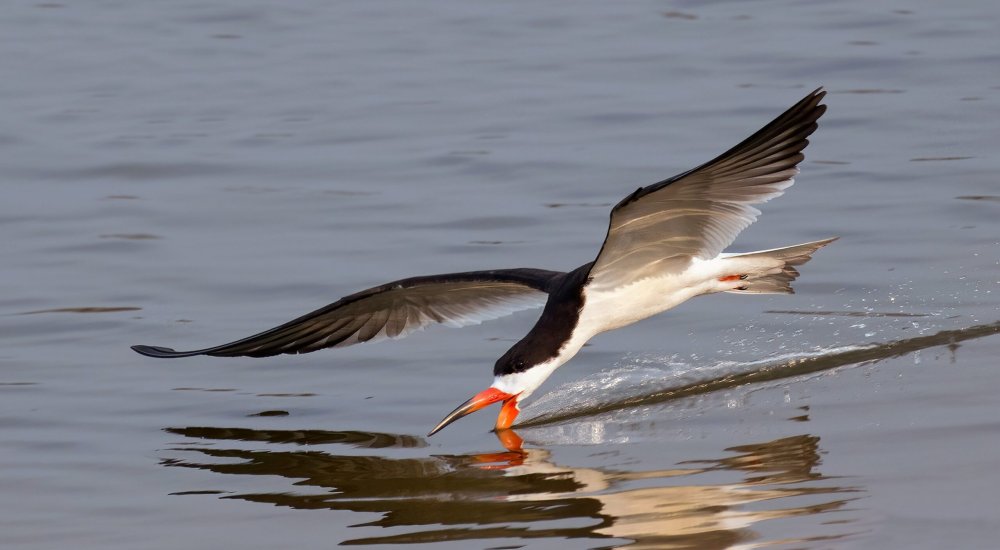
These birds winter in the south, but breed here, and can be pretty common. I’ve never seen one in fresh water.

